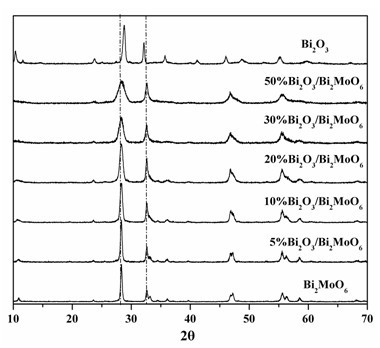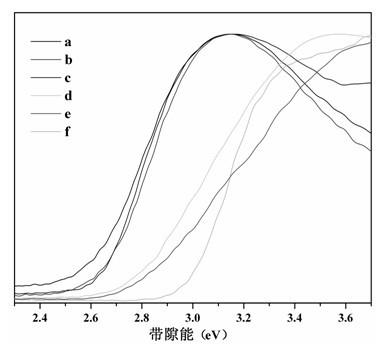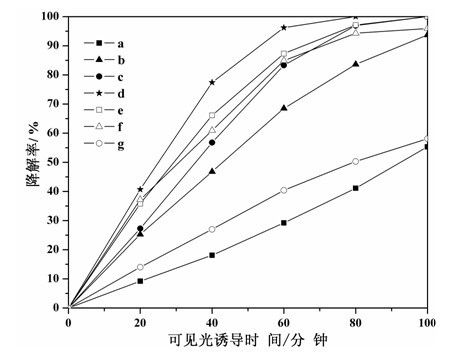Catalyst Bi2O3/Bi2MoO6 for photodegradation of organic matters and method for preparing the same
A catalyst and organic matter technology, applied in the field of photodegradation organic matter catalyst Bi2O3/Bi2MoO6 and its preparation, can solve the problems of large band gap, inability to absorb visible light, etc., and achieve the effects of high yield, low production cost and high purity
- Summary
- Abstract
- Description
- Claims
- Application Information
AI Technical Summary
Problems solved by technology
Method used
Image
Examples
Embodiment Construction
[0011] Synthesis of catalyst material of the present invention:
[0012] First, 6 mmol (2.9105 g) of bismuth nitrate (Bi(NO 3 ) 3 ·5H 2 O) Disperse evenly in 15 ml of deionized water, stir evenly to obtain A solution. Then 0.357 mmol (0.4414 g) of ammonium molybdate ((NH 4 ) 6 Mo 7 o 24 4H 2 O) was dissolved in 10 ml of deionized water and stirred until completely dissolved to obtain solution B. Then slowly pour B solution into A, stir at room temperature for 30 minutes, add 5 mol / L sodium hydroxide solution, adjust the pH value of the solution to 1.0, and put the above solution into a 100 ml polytetrafluoroethylene reaction kettle , and then placed in a 150°C muffle furnace for calcination for 5 hours. The calcined sample was filtered and washed several times, and then placed in a muffle furnace for calcination at 300° C. for 5 hours to obtain the target catalyst.
[0013] Such as figure 1 , figure 2 , image 3 Shown, show through X-ray powder diffraction test, ...
PUM
 Login to View More
Login to View More Abstract
Description
Claims
Application Information
 Login to View More
Login to View More - R&D
- Intellectual Property
- Life Sciences
- Materials
- Tech Scout
- Unparalleled Data Quality
- Higher Quality Content
- 60% Fewer Hallucinations
Browse by: Latest US Patents, China's latest patents, Technical Efficacy Thesaurus, Application Domain, Technology Topic, Popular Technical Reports.
© 2025 PatSnap. All rights reserved.Legal|Privacy policy|Modern Slavery Act Transparency Statement|Sitemap|About US| Contact US: help@patsnap.com



